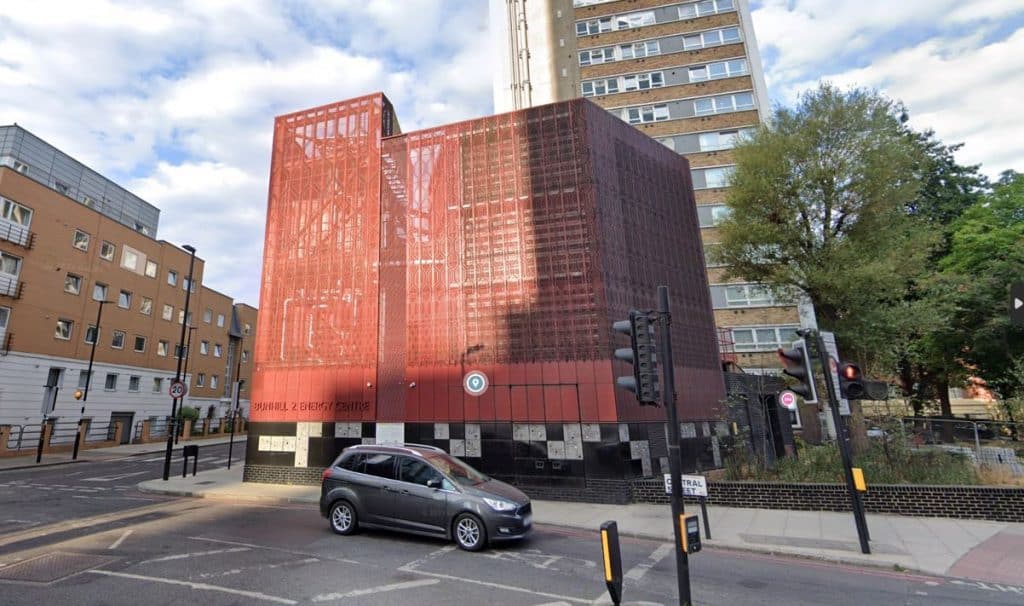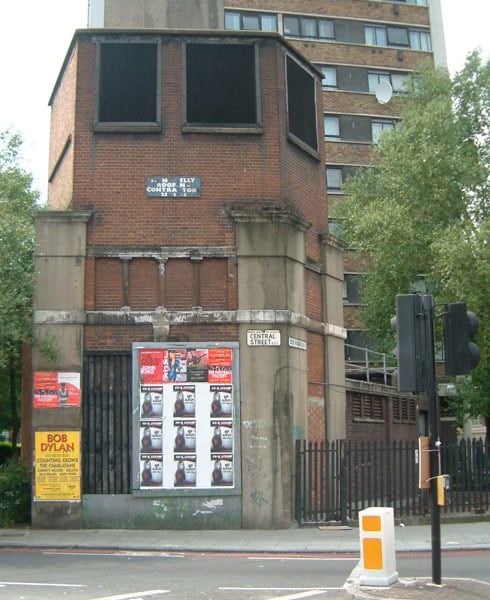Last Updated on 03/04/2023 by Alex Hamlyn
Table of Contents
Where is City Road Tube Station?
A Love Letter to City Road Station
Ah, the London Underground! A marvel of engineering and the beating heart of our beloved capital city.
As a true Tube enthusiast, I never tire of sharing stories about its colourful past, and today, I’d like to shine a light on a lesser-known gem: City Road Station.
All Aboard the Northern Line
Situated on the Northern Line, City Road station was built on the corner of City Road and Central Street, and found itself snugly positioned between the popular Old Street and Angel stations. Opening its doors to eager passengers on November 17, 1901, the station was brought to life by the creative genius of the esteemed architect Thomas Phillips Figgis, who was an architect for the City & South London Railway (C&SLR). Figgis designed several stations on the C&SLR, which later became part of the Northern Line.
With its distinct charm and flair, City Road station was (while it lasted) an important hub that connected the thriving neighbourhood of Islington to the rest of London. Islington itself has always been a melting pot of diversity, with a dynamic blend of residential, commercial, and industrial areas. Its unique character and energetic atmosphere have made it an essential piece of the puzzle that is London’s lively charm. City Road station, in its heyday, played a vital role in connecting the area’s residents and businesses to the beating heart of the city.
The station’s location in the bustling area of Islington meant that it was an integral part of the community, playing a key role in the daily lives of those living and working in the area. From early morning commutes to late-night journeys home, City Road station saw a constant stream of passengers eager to make their way through the diverse and colourful streets of London.
Closure of City Road Station
City Road Station closed on August 8, 1922, for a combination of reasons:
- Low passenger numbers: The station was not as heavily used as other stations on the line, leading to insufficient demand to justify keeping it operational.
- Proximity to other stations: City Road Station was located relatively close to both Old Street and Angel stations. Passengers often found it more convenient to use these nearby stations instead, further contributing to the decline in City Road’s patronage.
- Operational costs: Running a station requires ongoing maintenance and staffing costs. Given the low passenger numbers and the proximity to other stations, it became financially inefficient to keep City Road Station open.
Ultimately, the combination of these factors led to the decision to close the station in 1922. This closure was part of a broader effort to streamline and optimize the London Underground network, ensuring its long-term viability and effectiveness in serving the city’s transport needs.
City Road Station and the Second World War
After City Road Station closed, it was not significantly rebuilt or repurposed for a long time. However, parts of the station have been used for various purposes over the years.
During World War II, many London Underground stations were used as air-raid shelters, providing protection to civilians during the Blitz. However, there is limited information specifically about City Road Station’s role during this time, as the station had already been closed since 1922.
It is not clear whether the disused City Road Station was repurposed or played a significant role during World War II. Nevertheless, the London Underground as a whole played a crucial role in sheltering people from the bombings and, in some cases, served as a base for military and government operations.
In the 1990s, a section of the disused platforms was converted into a ventilation shaft for the Northern Line. This modification was made to improve air circulation and maintain a comfortable environment for passengers using the line.

A Family of Forgotten Stations
City Road may be one of the more obscure stations, but it’s far from alone in its abandonment. Down Street, another disused station on the Piccadilly Line, was once used as a secret bunker for Winston Churchill during World War II.
Then there’s South Kentish Town, a station that briefly operated on the Northern Line before closing in 1924. It seems that every line has its forgotten siblings, each with a unique story waiting to be rediscovered.
The Underground’s Spooky Side
While there are many tales of hauntings and supernatural occurrences linked to various stations across the London Underground network, it seems that City Road Station does not have any widely known or documented ghost stories.
While that in itself is not unusual, there is one documented death at this station which dates back over 100 years to August 1916, when a passanger was killed by a train leaving the station. Sadly, the station guard had given the driver the all-clear to depart the station before all passangers were safely aboard.
City Road isn’t the only station with a touch of the supernatural. Aldwych Station, a now disused station on the Piccadilly Line, is believed to be haunted by the ghost of an actress from a nearby theatre.
And let’s not forget about the phantom footsteps heard at Covent Garden Station, said to belong to a Victorian-era actor who died on stage.
It seems the London Underground is just as full of spirit as it is of commuters!
In Conclusion: The Tube’s Hidden Charms
While City Road Station may no longer serve its original purpose, it remains an intriguing piece of London’s past. Its unique design, lively history, and ghostly tales offer a fascinating glimpse into a bygone era.
So next time you’re zooming through the Tube, take a moment to appreciate the hidden gems that make the London Underground truly special. And who knows? Maybe you’ll even catch a glimpse of a ghostly passenger or two.
Image credits
- City Road Station today (Google Maps Street View)
- Original City Road Station Building: By Nevilley – Own work. Lunchtime photo expedition., CC BY-SA 3.0, https://commons.wikimedia.org/w/index.php?curid=301000
References
- https://en.wikipedia.org/wiki/City_Road_tube_station
- https://www.worldabandoned.com/city-road
- https://www.youtube.com/watch?v=wbJF_LQTAxQ
- http://www.abandonedstations.org.uk/City_Road_station.html
- https://uktransport.fandom.com/wiki/City_Road_tube_station
- https://www.subbrit.org.uk/sites/city-road-station/
- https://www.mylondon.news/news/nostalgia/abandoned-london-underground-station-now-22710185



